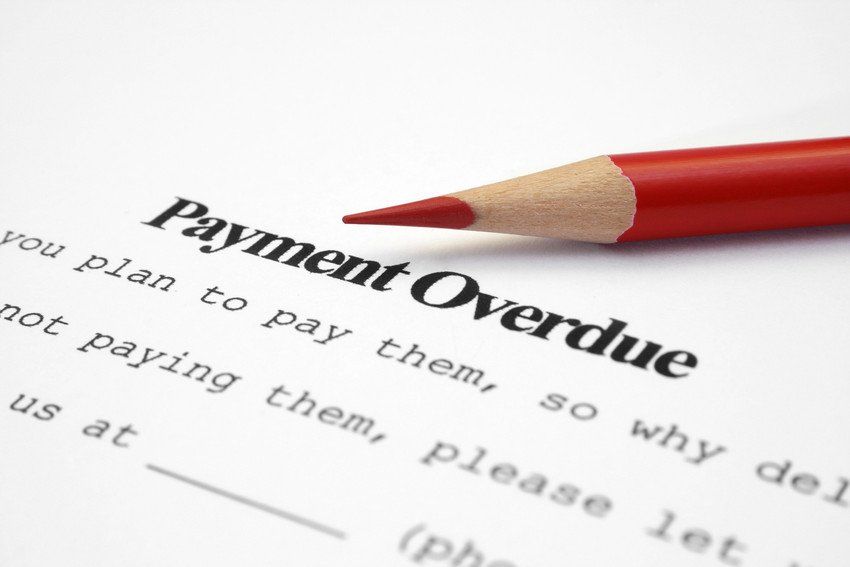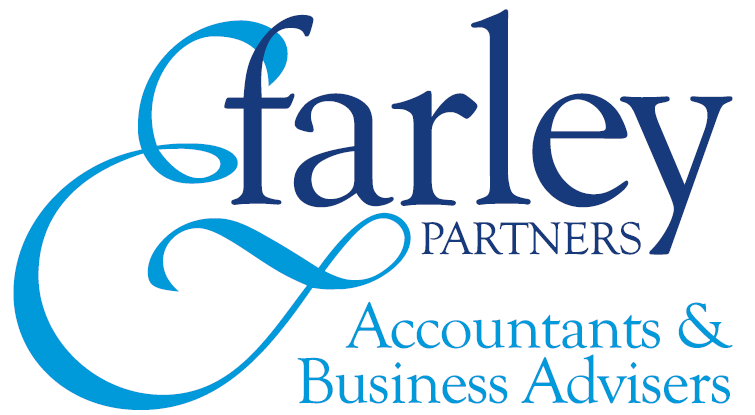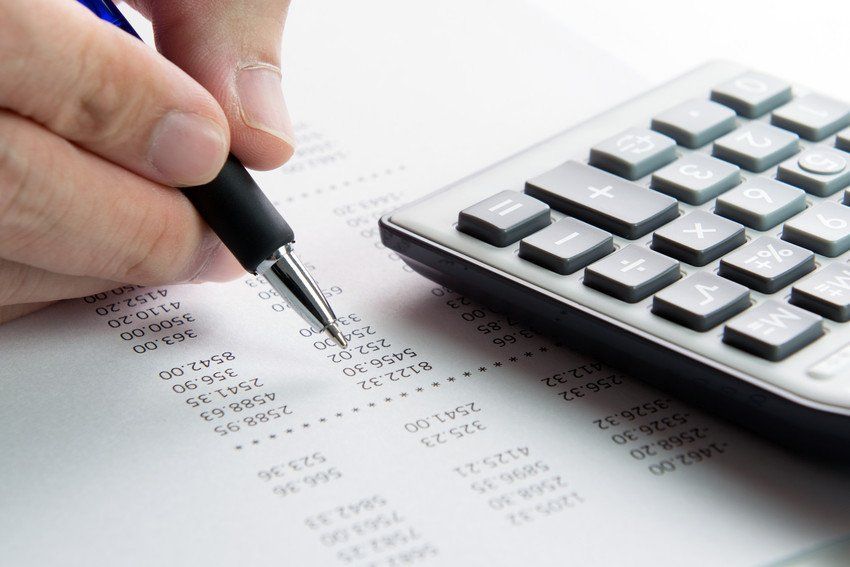Blog
Blog

11 Jan, 2022
Buy to let - invest for profit! With the property market booming you might be thinking about investing in property to let. High rental yields might appear to provide a safe investment opportunity. What might be the returns and how would they be taxed? On the bandwagon? It’s not just London and the South-East where the property market is booming. A major property agent is selling 60 to 70% of its new developments in Leeds, Manchester and Birmingham to investors. And we’re not talking about property tycoons either - just ordinary people who’ve seen the potential rewards to be made from property. Fund it Unless you’ve got excess cash sloshing around you’ll probably need to take out a second mortgage to purchase the property. Several lenders now specialise in this market and will lend between 75% and 85% of the purchase price. You could try Mortgage Express, Northern Rock, Birmingham Midshires or Britannia. Shop around as there are deals, such as interest holidays, to be had. Most will not take your existing mortgage and credit commitments into account. But they will need to be satisfied that the anticipated rental income will cover the monthly mortgage payments and the ongoing costs of maintaining the property, etc. To keep the interest payments to a minimum you should take an interest only mortgage then redeem the loan by either selling the property once it’s risen in value or make annual lump sum repayments from the letting profit. How much? Naturally a “commercial” mortgage is likely to cost slightly more than a purely residential one. Expect to pay a premium of between 0.25% and 0.50% on top of the normal variable interest rate. At current rates this might mean a mortgage at 7.50%. If you borrow say £80,000 to fund the purchase of a £100,000 property, the monthly interest payment would be £500. This means you’ll need to show the lender that you’ll be able to net at least this amount. In gross terms we reckon that the monthly rental you’d have to charge would be around £700. Expect to pay a property managing agent15% (£105) and pay around 10% into a fund to cover things like insurance, property maintenance and periods when it’s not occupied. If you let the property for £1,000 per month (four tenants each paying £250), after deducting these sums and the mortgage interest you’d still net £250. Tax too! OK, so it’s easy to see how rented property can generate a healthy income. But of course the taxman will want a slice of it! The tax position for rental properties is broken into two parts. 1. Income tax is payable on the profit generated each year after deductions for the ongoing expenses have been made. The taxman will generally offset mortgage interest payments, ground rent, service charges, management fees, repairs and up to 10% depreciation from the gross rental income before calculating the income that you’ll have to pay tax on. Tip. Making capital purchases e.g. a new cooker is not an allowable expense. But the cost of repairing the cooker would be - so make sure you keep receipts for all repairs. 2. Capital gains tax (CGT) is calculated on the gain made when the property is sold after allowing for your annual CGT exemption in the year of disposal (currently £7,100). A complicated formula for tapering relief on gains has also been introduced by the Chancellor - check the exact position with your accountant before selling. Tip. If you purchase the property jointly with your spouse you can claim two sets of CGT exemptions against the property sale proceeds. Before you buy make sure that the property will generate a rental income at least 50% higher than the mortgage payment. Shop around for a competitive mortgage quote and keep receipts for all repairs.

11 Jan, 2022
Analysing profit Every year when you meet with your accountant, he tells you that the company has had another good year and made a substantial profit. If that’s the case, why is it such a struggle to find the cash to pay the tax bill? Accountants’ profit The Profit & Loss Account (P&L) that your accountant prepares shows the financial performance of your business over a given period (usually a year) and indicates whether or not your business is making any money. The P&L is also used to calculate your tax bill. Your accountant works out your profit by adding up all your sales for the year and subtracting your business expenses from them. He then makes a few accounting adjustments to arrive at the “bottom line” - the net profit for the year. It can come as quite a surprise to find out you’ve made a profit and have to pay tax when you’ve got an even bigger overdraft than last year. Before you start blaming your accountant, read on... Profit is not cash It is very important to remember that profit is not the same as cash. Why? Perhaps the most common reason is the difference in timing between making a sale or purchase and actually receiving or paying the money. For example, you made a sale in February but your customer didn’t pay until April. If your accounts are prepared to March 31 each year, then the sale will be included in the profit but the money won’t be banked until the following year. So, even if you’re owed money at the year-end, you’ll have to pay tax on it. Tip. Review your year-end debtors and make a list of debts that are unlikely to be paid. A provision for these can be made in your accounts which will reduce your profit and therefore your tax bill. Matching Your accountant makes certain adjustments so that income and expenses are matched to the year(s) they relate to, not the year they are received or paid. Some of these adjustments can result in large differences between profit and cash: Stock At the year-end, you may have a lot of cash tied up in goods that haven’t been sold yet. The cost of this “closing stock” is not included in your P&L expenses as it cannot be matched to sales. Tip. When working out your closing stock figure, don’t include the cost of old stock that you can’t sell. It has no value. The smaller the closing stock figure, the smaller your profit and the smaller your tax bill. Depreciation If you bought a car for £8,000, you may be surprised when it doesn’t show up on your P&L. Instead, depreciation is calculated and shown as an expense on the P&L. The depreciation rate depends on the useful life of the asset but it’s usually 25% of the cost each year so the depreciation on the car would be £2,000 a year for four years. Therefore, in the year you buy the car, the profit would be £6,000 higher than the cash. Drawings If you’re self-employed, your cash drawings do not affect your profit. It’s a common misconception that you are taxed on your drawings. You’re not. You’re taxed on your profit so it makes no difference if you leave the money in the business or transfer it to your private account. Just make sure you put enough aside (at least 25%) to pay your tax bill (the tax due on a profit of £3,000 a month is over £9,000). Profit doesn’t always mean more cash. The main reason is the timing difference between invoicing and getting paid. A provision for year-end debtors will reduce profits and therefore your tax bill.

11 Jan, 2022
If you employ even one member of staff you need to set up a payroll. There are many rules to be complied with so you might be tempted to let someone else take care of it. But could you do it yourself? Payroll basics Whether you’re about to set up a payroll for the first time or if you’re upgrading your existing system, it helps to know what you’re supposed to know. And if you use a payroll bureau without knowing what’s involved, you might be surprised how easy it can be - and decide to do it yourself. Register with your local tax office. You’ll receive a PAYE reference and a pack of information including tables for calculating the deductions. Maintain payroll information for each employee - NI number, date of commencement, rate and frequency of pay, the employee’s tax code. List all wage payments. This is often done on form P11 which is used to calculate the tax due from each employee and the amount of NI that you’ll both have to pay. Make additional deductions, e.g. to a pension fund. These are normally only with the employee’s consent. Issue P45s to employees when they leave. Manual calculations? If you run a small business you can operate a manual payroll system. This is not as easy as you might think. Everything has to be recorded and calculated manually. This might be OK if you already employ the services of a competent and numerate bookkeeper but if you’re just about to establish a payroll we’d advise against this method. The fine for sending in the wrong information could be £3,000 per employee! Auto makes sense Most businesses prefer to automate payroll. This effectively leaves you two choices - 1) do it yourself using some specialist computer software or 2) pass the entire responsibility to a payroll bureau or a firm of accountants. Costly. A major payroll bureau that we contacted quoted £6.50 per employee per month. For 10 employees this could mean £780 p.a. plus VAT. Accountants might well be cheaper and certainly worth considering if keeping sensitive payroll information off site is important. If a firm already looks after your business, adding the payroll function is unlikely to add more than a few hundred pounds to the annual bill. A software package like that available from Sage or Pegasus will start at around £200 (rising to approximately £350 for up to 100 employees). However, you will of course have to factor in the cost of your time (or another employee’s) needed to operate it. The purchase price is a one-off payment. Whereas with a payroll bureau fees will rise as new employees join. Tip. Contact your accountant to see whether he can handle your payroll for only a marginal increase in the fees you pay. Decisions, decisions The real questions are whether you’re prepared to lose control of payroll and whether you have the existing resource to be able to manage it in-house. On the resource side, once all the employee information has been entered into your computer, it will require no special skills or huge amount of time to operate the payroll - we reckon no more than a couple of hours per month. It’s really only a question of keeping the information up to date. For example if an employee is off sick you simply mark the dates on the calendar supplied with the software - the computer will then calculate whether pay is due and at what rate, including SSP. It will also generate all the vital year end forms needed such as P11Ds and P14s. Although a manual payroll system is not for the fainthearted there could be savings to be made by investing in a software package. Alternatively, see if your accountant can do the work for a marginal increase in his annual fee.

11 Jan, 2022
The longstanding default surcharge system will be replaced with a new penalty regime for return periods starting on or after 1 April 2022. How will this affect you? Out with the old. Under the current default surcharge system, a penalty is based on the unpaid tax that your business owes on the due date of the return. This starts at 2%, rising to 15% with each subsequent offence. You will have already received a surcharge liability notice for the first offence and only be penalised for late payments within the following twelve-month period, a lifeline, so to speak. However, the new system will apply separate penalties for late paid tax and also submitting your return late. Trap. You don’t currently get a surcharge if you pay the tax on time but put the return in late. That will change with the new system. In with the new. A limitation of the existing system is that a payment made one day late results in the same surcharge as one made six months late. But the new regime will raise extra penalties according to the length of time it takes you to pay. In other words, there will be a big incentive for you to pay your dues as soon as possible. Tip. The new system will also give your business an incentive to agree a time-to-pay proposal with HMRC if you have a long-term payment challenge. Interest. Interest will also be charged on late paid tax, as well as a penalty, calculated at 2.5% above the Bank of England rate. Late returns. HMRC will issue a single penalty point for the late submission of a VAT return and, once your business has exceeded a points threshold for multiple missed returns, a flat penalty of £200 will be imposed for each late return. Tip. As with the current system, you can appeal against a penalty if there is a reasonable excuse for either the late payment or return. From April 2022, penalties will apply for late VAT returns as well as late payments of tax - paying the VAT on time won’t mean a nil penalty any more. The new system will increase the penalty based on the length of time you take to pay.

11 Jan, 2022
Late payments can severely threaten your cash flow, and ultimately the survival of your business. Last year, almost over 50% of businesses were forced to take the no-nonsense approach of suspending work and services for those who owed them money, according to Our Late Payment Survey. The survey showed the negative effects of tardy payments all too clearly, revealing that over 50% of the businesses surveyed had to make at least one employee redundant last year as a direct consequence of late payments. Stopping your services is certainly one way of making your feelings about late payments known, but it doesn’t do much for already-strained professional relationships. So, what are your alternatives? Well, you may legally be entitled to charge interest on any money you’re owed. This gives you the right to claim interest from a customer who fails to pay its bills on time. Instead of relying on the law, you can make your own arrangements in your contracts in relation to charging interest on late payments. Often, explaining that you plan to charge interest on any overdue payments can be enough to get a speedy payment out of your debtors. Before it comes to that, make sure that it’s easy for your customers to pay on time. Offer fast and simple payment methods, including Cash in hand, direct debits, standing orders and payment before receipt of goods or provision of services to make it less of a chore for them. For more advice and guidance, contact us about How do I apply interest on late payments briefing.

11 Jan, 2022
Now that coronavirus-related restrictions are starting to be eased, inspectors are heading out again. Who is on their radar? Enforcement. The Scottish Environment Protection Agency (Sepa) has said there will be an increasing number of enforcement staff on the ground in the coming weeks as more people are vaccinated and restrictions due to coronavirus are eased. It’s a fair bet that the Environment Agency (EA) in England will be doing the same. Constraints. Staff who respond to incidents are classified as key workers and have therefore been permitted to travel to do their job during lockdown. But regulators across the UK have taken an extremely cautious approach with most enforcement officers restricted to desk-based duties. They have been reacting to many incidents and providing advice remotely, which campaigners have said isn’t working. In the dark. It’s also worth noting that in Scotland Sepa has also been hit by a cyber attack. This happened on Christmas Eve 2020 and months later 30% of staff still don’t have email. Permits etc. have been extended and many routine checks and advice stopped. These are gradually returning. More police. Don’t expect to see hordes of enforcement staff as lockdown restrictions are lifted. While coronavirus has hamstrung their enforcement activities, there has been a decline in policing over a number of years due to budget constraints. Targets. Those that are out will be targeting the sites and businesses they see as higher risk, including those they have had on their radar as struggling or failing to comply with regulations, permits, etc. Tip. Checks have been few and far between for the past year but they will certainly increase in 2021. The regulators will also be out to prove that their “smarter” approach to regulation - with fewer boots on the ground - is working. Compliant businesses have nothing to worry about so make sure your paperwork etc. is in order. Although enforcement officers are back to full duties, their numbers are low. This means only high risk sites and those identified as breaching permits etc. will see them. If you keep on top of compliance, you’ll avoid a visit.

11 Jan, 2022
The rules for off-payroll working changed in April 2021. If they apply to someone who works for you, or you are the worker, there are new payroll and self-assessment reporting requirements. How might they affect you? Off-payroll and RTI. The long-awaited changes to the off-payroll working (IR35) rules took effect on 6 April. HMRC is reminding businesses and other organisations that are or will apply the rules to contractors who work for them, that payments made on or after 6 April 2021 are only affected if the work in question was carried out on or after that date. Tip. If you’re a contractor and the business or organisation you work for is applying the off-payroll rules to your contract, make sure that if you send an invoice covering work done both before and after 6 April you specify the values for each. Payroll indicator for payers. When including payments you make to a contractor for off-payroll work in your payroll you must use the “off-payroll worker subject to the rules” indicator in your PAYE RTI reports (full payment submission) (FPS). The name of the indicator might be different depending on what payroll software you use, however it should be easy to spot. Warning. If you use, or have used, the indicator for a payment when you shouldn’t have, HMRC is asking that you urgently send a corrective FPS for the relevant payroll period. Off-payroll workers. If you’re a contractor and are applying the off-payroll rules to payments you receive from a customer (rather than your customer applying them), you must not use the off-payroll indicator mentioned above. HMRC is especially adamant about that. Self-assessment. If your customer is applying the off-payroll rules and you’re repaying a student loan, you should make sure that you’re registered for self-assessment to ensure that HMRC calculates the correct loan repayment. When reporting PAYE and NI for a worker made under the off-payroll rules you must use the special indicator in your payroll software. The rules don’t apply to payments made after 6 April 2021 that relate to work done earlier.

11 Jan, 2022
As the restrictions on foreign travel are lifted, many employees are planning to go abroad. If they are required to quarantine on their return to the UK what are their pay rights? Green, amber and red. In relaxing the rules on foreign travel, the government has introduced a traffic light system. This allows people in England to holiday abroad in “green” list countries. Travel to “amber” and “red” list countries is restricted, but an employee may have a valid reason for travelling there. Countries and territories can be moved between lists if conditions change, e.g. a green list country could turn amber and an amber country could turn green. Mandatory ten days. Those who visit amber or red list countries are legally required to quarantine on their arrival back in the UK and you can’t require them to attend your workplace during this time. Also, it’s possible that an employee who has visited a green list country could be required to quarantine because they’ve travelled with a person who has tested positive for COVID-19. Where an employee is legally required to quarantine, what are their rights in relation to pay? Pay rights. Ultimately, this will depend on what the employee can do during the quarantine period. If they can work from home, then you must pay them as normal. Where this isn’t possible due to the employee’s job role, you aren’t obliged to pay them. This is because the employee isn’t able to fulfil the terms of their employment contract during the quarantine period. You could, however, allow them to take the time off as annual leave or a mixture of annual leave and unpaid leave. Tip. Where an employee is required to quarantine on their arrival back in the UK, they have no right to receive statutory sick pay (SSP) unless they have COVID-19 symptoms. To avoid any misunderstandings, ensure that your employees know what their rights are to pay during any period of quarantine before they travel outside of the UK. Where the employee can work from home, they must be paid their normal pay during quarantine. If this isn’t possible, they have no right to pay but could take annual leave. Statutory sick pay is only payable if they have COVID-19 symptoms.
Phone: 020 7596 2713
Head Office Address:
Farley & Partners Ltd,
12th Floor, The Broadgate Tower,
20 Primrose St, London, EC2A 2EW
Registered Ltd Number: 04660613
© 2024. The content on this website is owned by us and our licensors. Do not copy any content (including images) without our consent.


